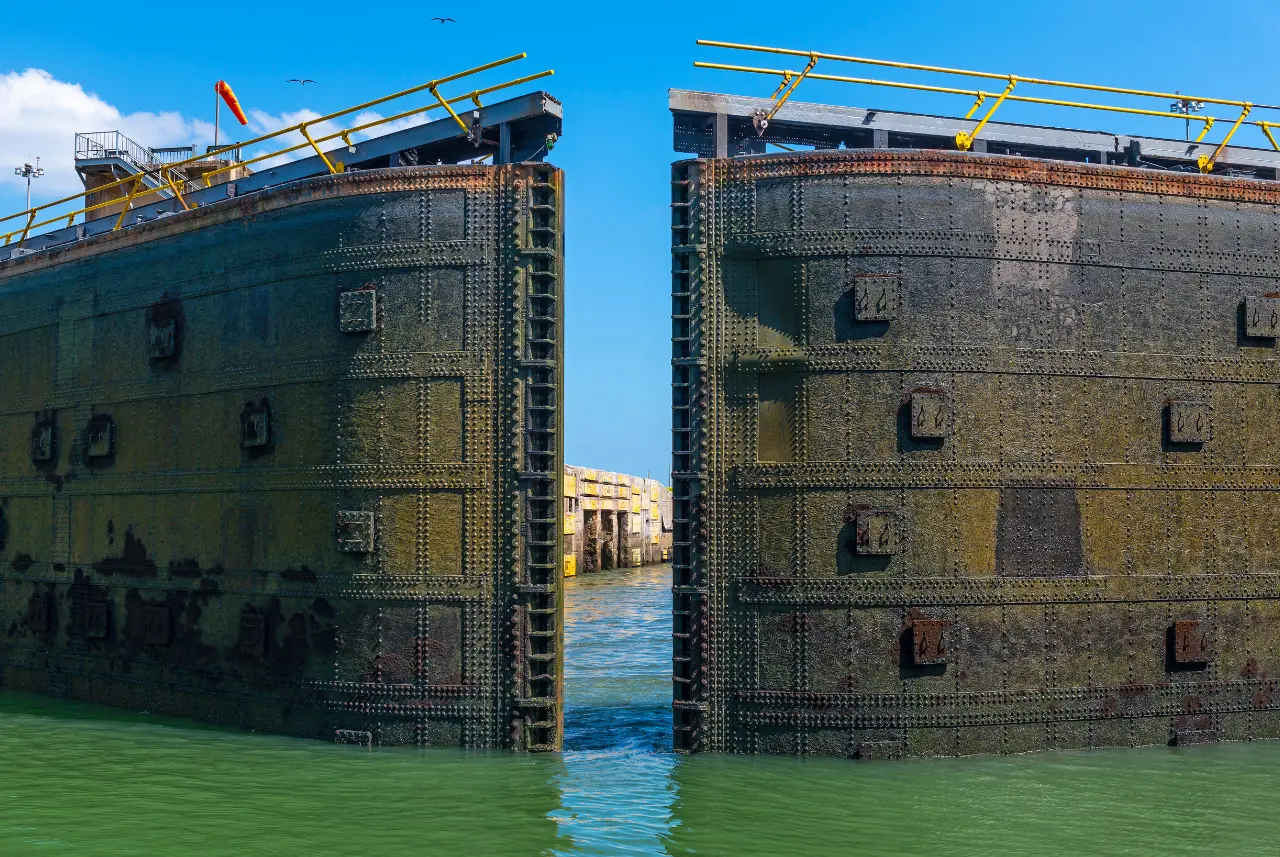
In the 20th century, oil dominated political decisions, wars, and the global economy. Today, without much fanfare, water has begun to take center stage in geopolitical strategies. And it’s not just about water as a vital resource for drinking or farming. It’s about water as infrastructure: rivers, canals, ports, basins, reservoirs — that is, as a channel for international trade and a foundation of economic power.
In 2023 and 2024, Panama’s water crisis revealed the beginning of a new era. The Panama Canal — a cornerstone of global maritime trade that handles over 500 million tons of goods annually — reduced its operating capacity due to an unprecedented drought. Instead of 36 daily transits, only 24 to 27 vessels can now pass through. Each ship delayed for days results in multimillion-dollar costs.
The problem is deepened by climate change. This is not a temporary crisis, it is the onset of a new order. Trade routes are at stake.
Whoever controls the new water or land alternatives will hold a structural advantage in global commerce.
Mexico on the Chessboard: From Borderland to Strategic Corridor
Mexico is geographically strategic, due to its proximity to the United States and its access to both the Atlantic and Pacific oceans. In this new world of congested trade routes, the country has a unique opportunity to become a vital logistical bridge between Asia, North America, and South America.
One of the most ambitious projects of the Mexican government is the Interoceanic Corridor of the Isthmus of Tehuantepec, a narrow strip of land of just over 300 kilometers connecting the Gulf of Mexico with the Pacific Ocean.
If properly implemented, it could become a land-based alternative to the Panama Canal, a new export hub for southern Mexico, and a source of logistics and industrial investment for historically marginalized states.
The drought in Panama and rising tensions in other maritime routes (such as the Red Sea) may accelerate global interest in this Mexican corridor.
However, to fully capitalize on this opportunity, Mexico must focus on:
Infrastructure investment: A geographical strip of land is not sufficient. Ports such as Salina Cruz and Coatzacoalcos need modernization and interconnection. Roads, customs, and port efficiency must be strengthened.
Legal and logistical security: To attract global companies reshoring their production chains, Mexico must ensure trustworthy customs processes, low levels of corruption, and legal protection for investments.
Connectivity with the United States: Leverage USMCA benefits to turn the corridor into a competitive route for exporters targeting the world’s largest market.
Sustainability: Unlike Panama, Mexico must plan and safeguard its infrastructure against climate-related risks. Developing the corridor with a focus on water, environmental, and community sustainability will be critical.
Water — both as a physical resource and a commercial pathway — demands a new diplomatic vision. In this context, Mexico could position itself as a regional leader in water diplomacy (transboundary agreements with Guatemala, Belize, and the United States); regional logistics integration with Central America; and joint investments in water resilience, watershed management, and green technologies.
The phrase “whoever controls the water, controls the trade” is no longer a metaphor. It’s both a warning and an opportunity. The 21st century demands that we rethink infrastructure as a component of national strategy.
With vision, investment, and political will, Mexico can transition from being a nation of passage to becoming a logistics, cultural, and commercial powerhouse. And it all begins — paradoxically — with a single drop of water that didn’t fall in Panama.
Mexican Press Agency is part of ALMA, which is dedicated to news and information about Mexico and Mexicans in the United States and is a fiscally sponsored project of Social Focus, a 501(c)(3) nonprofit organization based in Redwood City, California.